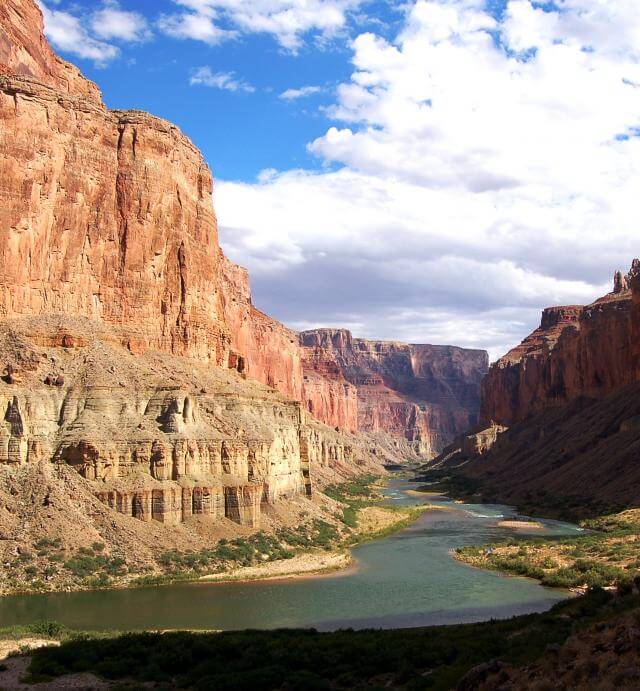Did you wonder, while you were on your white water raft trip, how the Grand Canyon formed? Or do you have trouble remembering the Grand Canyon’s rock layers, and the steps in its formation process? I do, and so I love mnemonics — short rhymes or phrases that help me keep things in order. Lindsay blogged about an easy way to remember the rock layers and we just stumbled across an equally easy way to remember how, exactly, the Canyon got to be the way it is today.
 Dude. It’s that simple. Each letter in the word “dude” represents the first letter of each of the steps in the Grand Canyon’s formation.
Dude. It’s that simple. Each letter in the word “dude” represents the first letter of each of the steps in the Grand Canyon’s formation.
D stands for deposition. Millions of years ago, oceans deposited layers and layers of sediment in the area that now encompasses the Grand Canyon. When those oceans receded, more sand was laid down as it blew across the region from dunes and shorelines. Then the oceans came back in and laid down even more sediment.
U stands for uplift. There were numerous processes at work in the Canyon’s creation. While sand dunes and oceans were laying down layers, the earth was pushing up the Colorado Plateau.
D is for down cutting. The Colorado River was a major player in the Grand Canyon’s formation. It cut its way down through the Colorado Plateau, through all those layers of rock and sand.
E stands for erosion. Water continues to wash away loose rock and sand, and it creeps into cracks and crevices. When the water freezes and expands, it splits rocks from steep canyon walls and continues to widen the Grand Canyon. Erosion created the giant terraced steps of the Grand Canyon’s walls.
So, the next time you’re on a rafting adventure with Grand Canyon Whitewater and your fellow passenger asks how the Canyon got to be so GRAND, you can just respond with a “DUDE.”

































